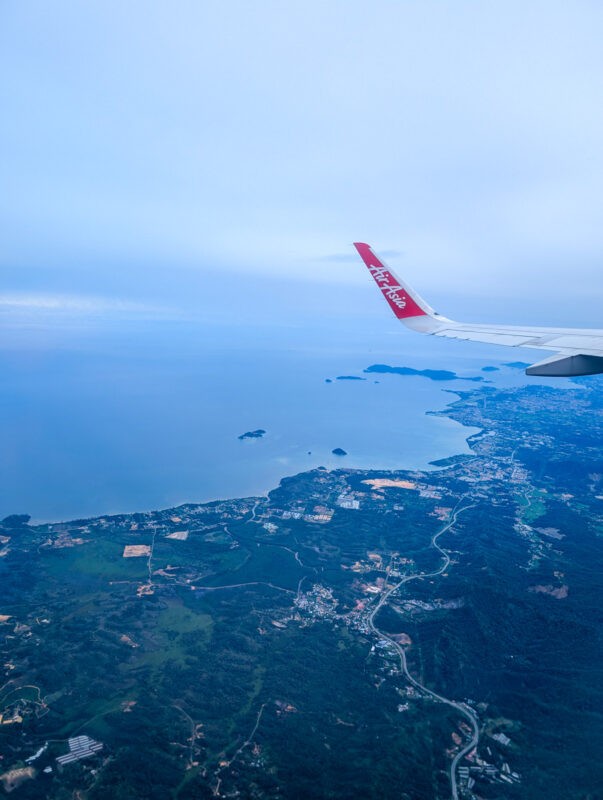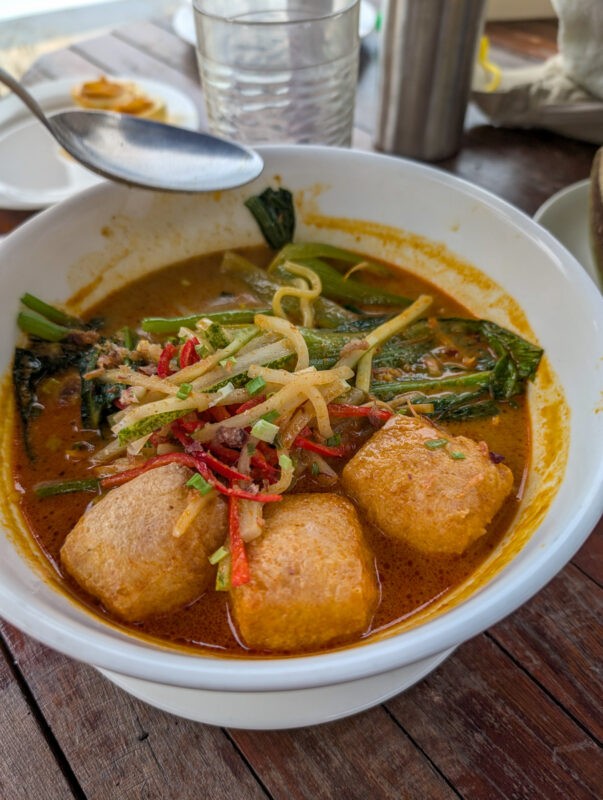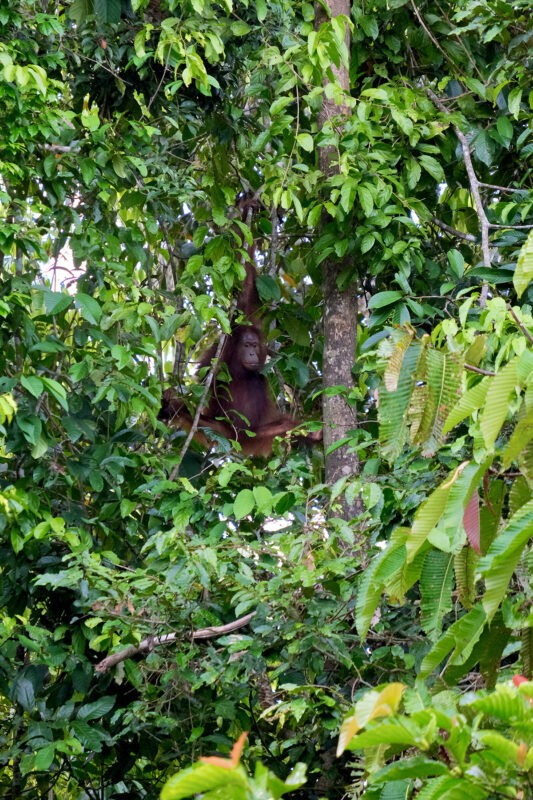“Welcome to the jungle!” exclaimed our guide Rul, arms outstretched, as our longboat sailed toward a wooden jetty.
My university friends and I are scattered across the globe – three out of the seven live in Australia, New Zealand and Dubai – so when we were planning a destination for a girls’ holiday, it made sense to look eastward.
We decided to holiday on the tropical island of Borneo, famous for ilush jungle, colourful reef and, of course, ubiquitous rainforest.
We were about a week into our trip and were spending two nights in a wildlife camp on the Kinabatangan River, a lifeblood that weaves through the dense jungle which is home to some of the most biodiverse terrain in the world.
The journey to Malaysian Borneo was a three-day affair, with flights first to Kuala Lumpur and then to Kota Kinabalu, the regional capital. Our journey hadn’t ended there, either – we were still venturing further east, to Sandakan and ultimately the jungle, where we hoped to spot an orangutan in the wild.
But orangutans aren’t the only thing that makes planning a trip to Borneo worthwhile. With dense rainforest leading out to white-sand beaches, delicious food cooked with South East Asian spices , friendly people and a welcoming culture, there are so many reasons to visit Borneo. Let’s explore them.
Is Borneo worth visiting?
Here’s why you should visit Borneo.
Welcoming cities

We’d started our trip in Kota Kinabalu, Borneo’s most famous city that springs up between the island’s white-sand beaches and lush rainforest.
Most tourists pass through Kota Kinabalu at some point, and while it’s not awash with things to do, it has a certain welcoming charm – particularly after a trip to the humid jungle with no showers!
The Masjid Bandaraya Kota Kinabalu (Kota Kinabalu City Mosque) appears as if it’s in a mirage, floating above a glassy pond of water. Tourists are welcome to enter – just a 10 ringgit fee to rent appropriate clothing (which is styled together with flair by the lovely assistant).
As it was the weekend, we ambled down to the Api Api Night Food Market, where the scent of freshly cooked rice and satay sauce wafted over the stalls. My mouth watered as noodles were freshly cooked before our eyes, seasoned with a simple stir fry sauce and spices, all for a princely three Malaysian ringgit (around 45p).
Glorious food

The culinary voyage didn’t stop in Kota Kinabalu; our bellies were full and our tastebuds were satisfied everywhere we travelled.
Malaysian food is criminally underrated; with Southeast Asian, Indian and Chinese influences, it’s a glorious hotpot of cultural fusion.
We gorged on creamy laksa on Gaya Island, the best roti of my life from a street food stall in Kota Kinabalu and chilli Aubergine in the middle of the Kinabatangan jungle.
Despite trying to eat street food wherever possible, I am a confessed oat cappuccino addict; and was delighted to find modern cafes in Borneo’s cities – and our resort on Gaya Island – catered to this.
Stunning reef
Borneo is in a prime position on the coral triangle, an area of reef in Malaysia, Indonesia and the Philippines that has, what some keen divers believe, the best reef in the world.
Reaching the best of the reef is no easy feat, however. First, you’ll need to fly to Tawau and then transfer to Semporna, a coastal city that serves as a launching pad for Borneo’s famous islands. Sipidan is the most renowned – and also the hardest to obtain diving permits for. At present, only divers with an advanced-level certification can plunge into the waters here.
While there haven’t been any incidents in recent years, these islands are currently “amber” on the Gov UK FCDO rating, meaning “advise against all but essential travel”. This is due to past piracy attacks and kidnappings operated by an extremist group based in the Philippines.
The last incident involving tourists was 2017 and plenty of tourists visit every year without issue. But visiting these islands is a question of individual danger risks (and whether your travel insurance covers visiting amber zones).
There’s plenty of reef, albeit not quite as colourful, north of Kota Kinabalu too – and the diving here is suitable for all abilities. We did a day of diving with Scuba Junkie, a Kota Kinabalu based dive school, and saw coral, plenty of bright tropical fish, a shark and a turtle.
Maldives-style beach resorts

Bright blue waves gently lapped at the steps of our overwater villa.
On Gaya Island, a tropical paradise just a 20 minute boat ride from Kota Kinabalu, luxurious resorts have popped up on the border of rainforest and reef.
If it wasn’t for the smell of Laksa in the air, you could be in the Maldives; the resort rooms and suites take heavy inspiration from the overwater buildings found in the South Asian country.
On this Gaya Island resort, large villas boast ultra-comfy beds, decking (some of which lead straight out to the ocean) and lush bathrooms with high-end toiletries. An infinity pool – where you can sit enjoying a cocktail or coconut (depending on how the mood takes you!) leads out to the bright blue ocean. Stand-up paddleboards, kayaks and snorkelling gear are all borrow-able from the watersports centre, free of charge.
While it’s a luxurious resort where nothing is too much trouble, at Gayana Marine Resort, Borneo’s ecosystem is the forefront concern. “Welcome to our plastic-free zone” is written at the entrance, with guests asked to leave any single-use plastic in the lobby.
Drinking water is readily available through water dispensers (and every guest receives a complimentary reusable water bottle) and at the on-site Marine Ecology Research Centre (the MERC), marine biologists like Syafizan Mohamad work toward boosting the area’s giant clam population.
“The project started in 2007, and it was a passion of the owner”, Mohamad told me. “He wanted to have a luxury resort here, on Gaya Island, but also give back to the world. Being close to Kota Kinabalu, ocean pollution is an issue here. So we do what we can to improve it”.
Rainforest

But, of course, most people visit Borneo for the rainforest – and this lush jungle is precisely the reason why you should plan a trip here.
After our warm welcome from Rul, we were shown around Uncle Tan’s camp. “We have seven-star accommodation!” Rul joked, as he showed us our sleeping arrangements; huts with mattresses and mosquito nets. “But I’m afraid our pool is out of service” he informed us, deadpan, motioning to the river. “Make sure you don’t go swimming in the river. There are crocodiles!”.
The river water was high on our trip, so we only caught glimpses of the crocs on our boat safaris; their steely eyes flickered in our direction as they protruded ever so slightly from the water. I made sure to keep my hands very firmly in the boat’s parameters!
After a tropical storm and an aborted night safari on night one, we were eager to spot some wildlife on day number two. It didn’t take long; after 10 minutes, Rul stopped the boat and motioned to the trees.
“Probiscous monkeys”, he told us, pointing to the tree. “This one in particular, we call the jungle playboy. He travels around with just him and a group of women!”.

More monkeys, crocs, flying fox bugs and plenty of flora later, we still hadn’t seen the ubiquitous orangutan. We’d trekked through the jungle and learned about the healing, hydrating and nourishing properties of the plethora of jungle plants (Rul told us how he’d used many of these when he once got lost in the jungle for two days at the age of 15).
We’d also explored the jungle in darkness, Rul showing us how to use our torches to track down – or avoid, as was the case for some of our party – spiders (in darkness, many Bornean spiders’ backs glitter as if they’re wearing diamond backpacks). We’d even seen a banded civet cat, which are much rarer than orangutans themselves.
But, not a group to give up, we booked ourselves on an extra morning river safari on our last day in the jungle, and set out at 6am, crossing all of our fingers that today would be the day we’d see one.
For an hour, nothing. Then – a rustling in the tree. “Is it another probiscous monkey?” I asked my friend Katie. “It looks like there’s only one creature there” she replied “orangutans are usually solitary, aren’t they?”
They are – but this one wasn’t. One orangutan swung into view, with another close behind. “The first one’s leaving a nest” Rul told us. “They build one every night, but in the morning they use it as a toilet and then have to build another!”

Apparently, we share 97% of the DNA as an orangutan. I hope the toilet skills are in the remaining 3%.
Thanks to palm oil plantations and illegal logging, it’s estimated that only 104,700 orangutans are left in the whole of Borneo. While the Kinabatangan River is an excellent place to spot them, it’s never guaranteed – Rul reckoned he saw one on average every four days.
Pygmy elephants are also native to the area, but they are even rarer than orangutans. Shockingly, only 1,500 of them are left in the wild – most of which are in Sabah.
With a renowned vigour to check my palm oil usage back in the UK, we said bye to Rul and Uncle Tan’s. With wildlife experiences, you never know what you’ll spot, but our two days in the jungle – learning about its plants and animals, sleeping amongst nature and spotting indigenous animals – made Borneo a bucket-list trip of its own.
So, should you visit Borneo?
Absolutely. Borneo’s a place like no other I’ve visited. If you’re at all into nature, animals or adventure, Borneo deserves a high position on your travel bucket list.

